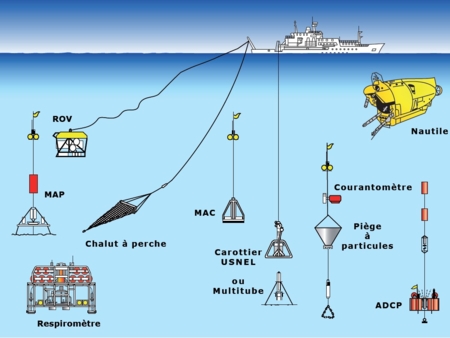Subseafloor archaeal communauties : from the surface to a deep hot biosphere ?
The sub-seafloor biosphere may contain two thirds of Earth’s total prokaryotic biomass. The large and active microbial populations buried in the sub-seafloor play a key role in global biogeochemical cycles. However, little is known about these prokaryotic communities. The depth limit of this sub-seafloor biosphere is still unreached, and elevated temperatures as well as insufficient energy sources are the likely factors limiting life at depth. Lnterestingly, archaeal communities with unknown physiologies and no cultured relatives seem to have a key role in deep marine sediments and hydrothermal ecosystems. As most deep biosphere microorganisms detected so far have been extremely resistant to cultivation, molecular approaches remain to date the most appropriate tools for the analysis of the overall prokaryotic communities in sub-surface environments. In order to determine the main environmental factor driving the archaeal diversity in the sub-seafloor, the present study is mainly focused on the comparison of the 165 rRNA (RNA- or DNA- derived) and functional gene diversity associated with four different sub-seafloor ecosystems: deep coastal margin and open-ocean sediments, and hydrothermal environment. The present study (i) shows the distribution of the archaeal communities within different biogeochemical habitats, (ii) reveals new phylogenetic lineages, (iii) proposes a different definition of the deep sub-surface, (iv) expands the known sub-seafloor biosphere to at least 1,626 meters below seafloor.







